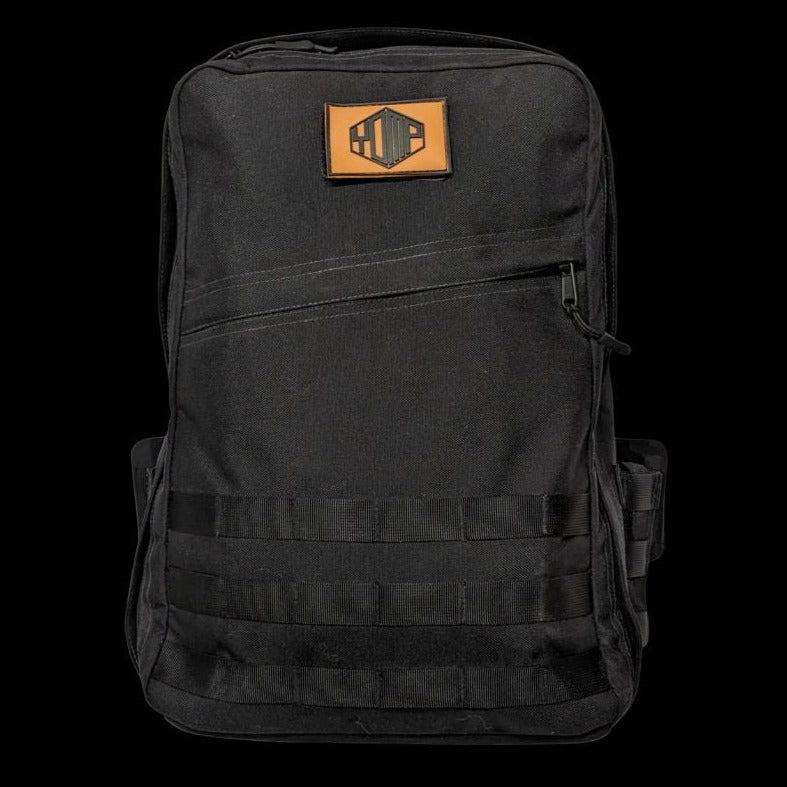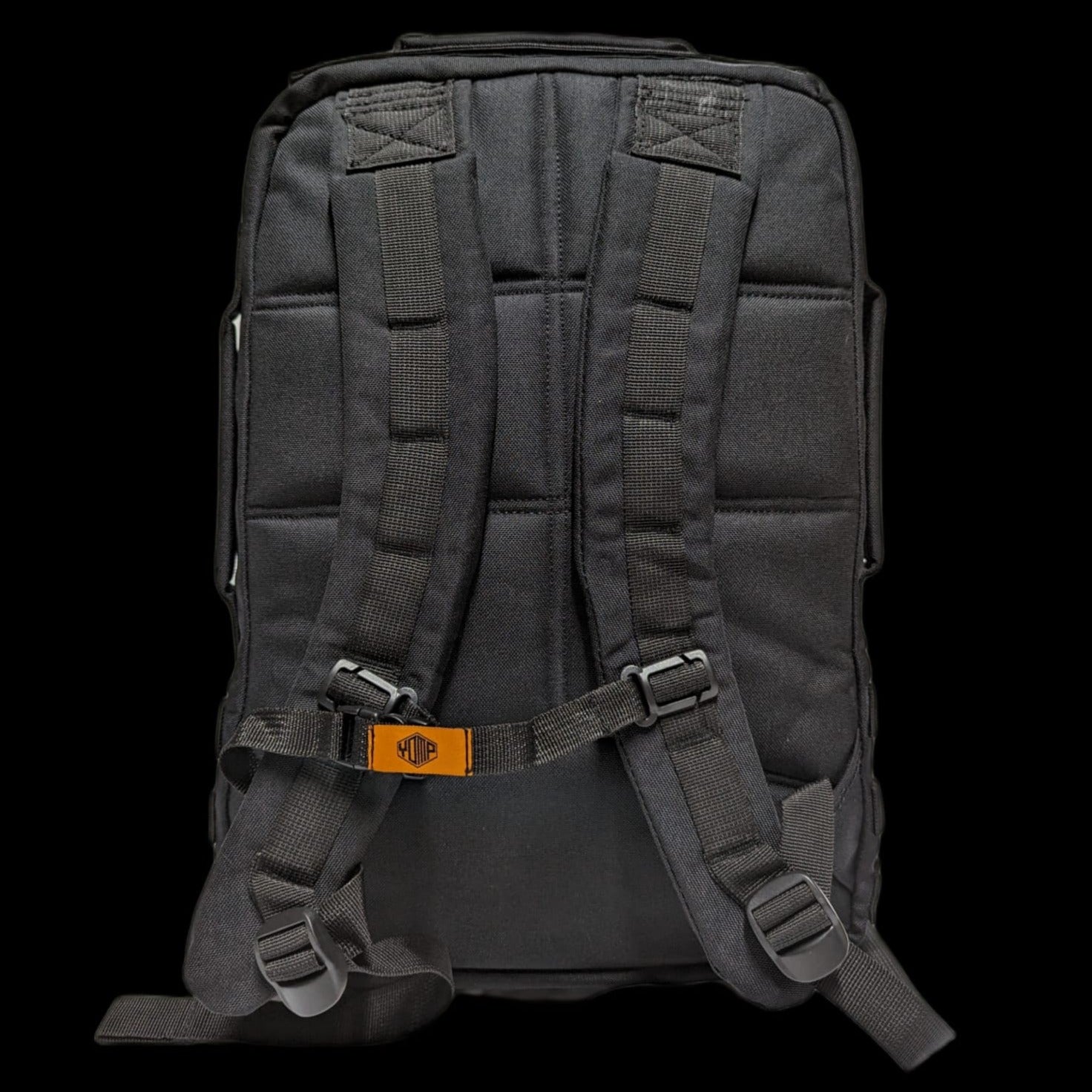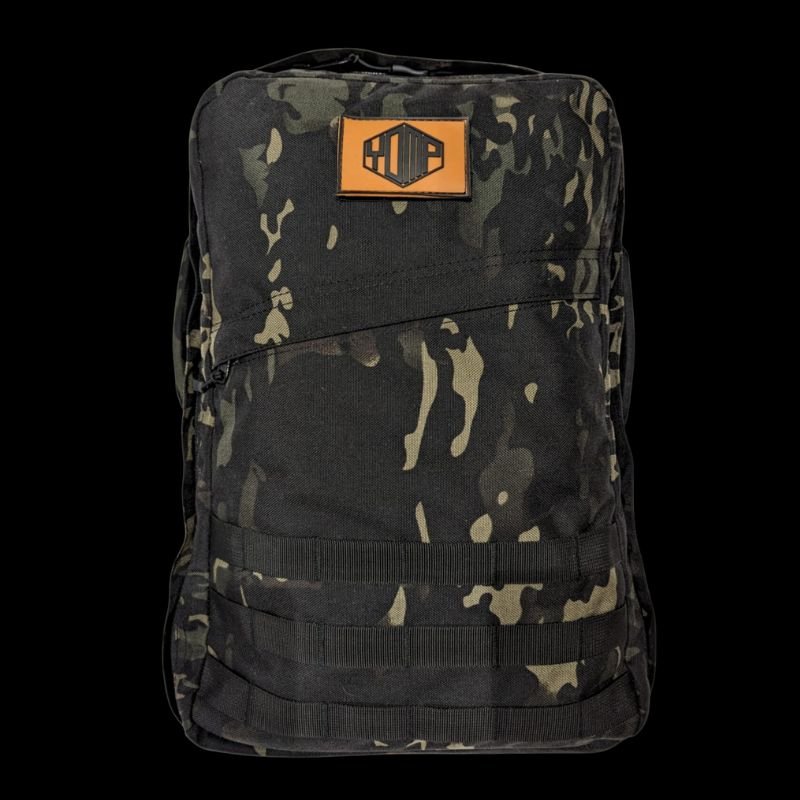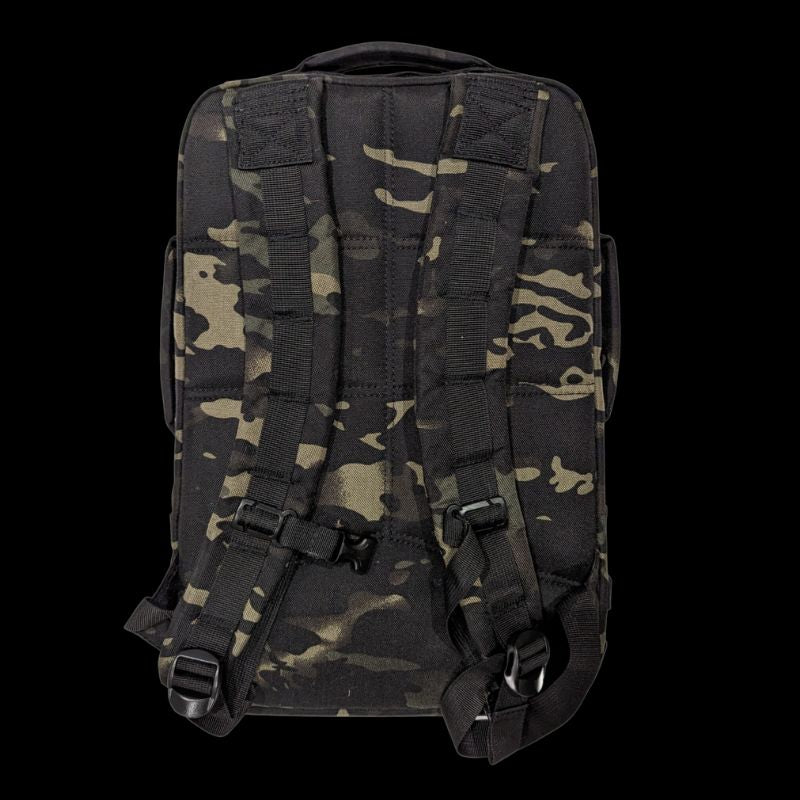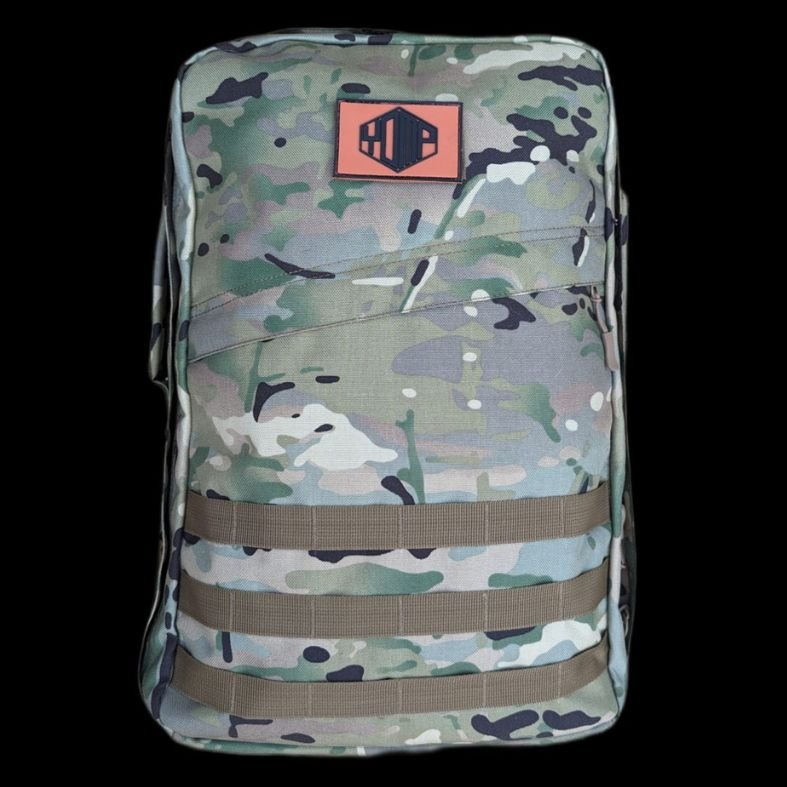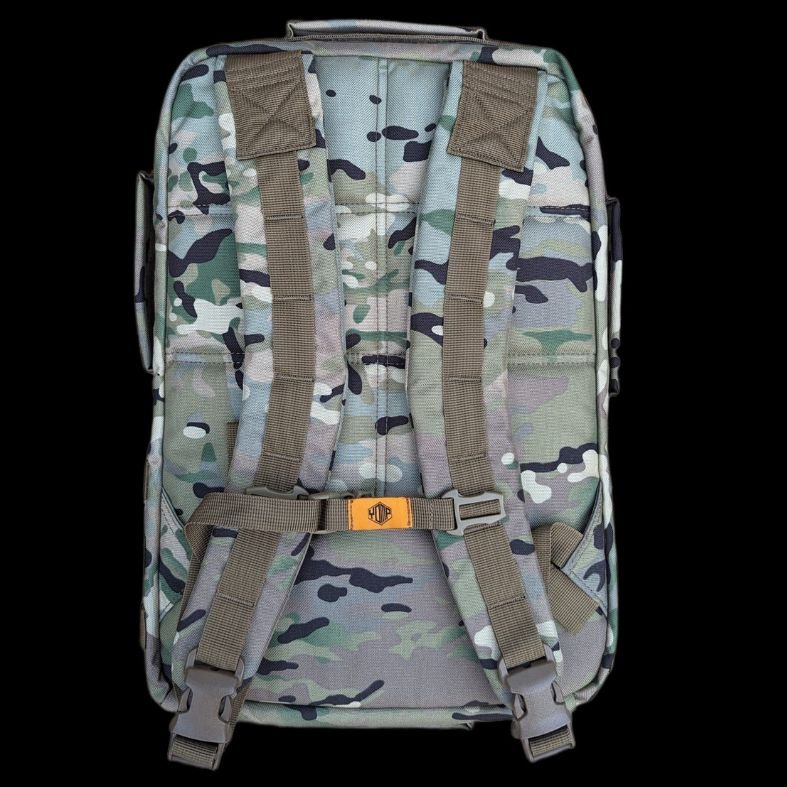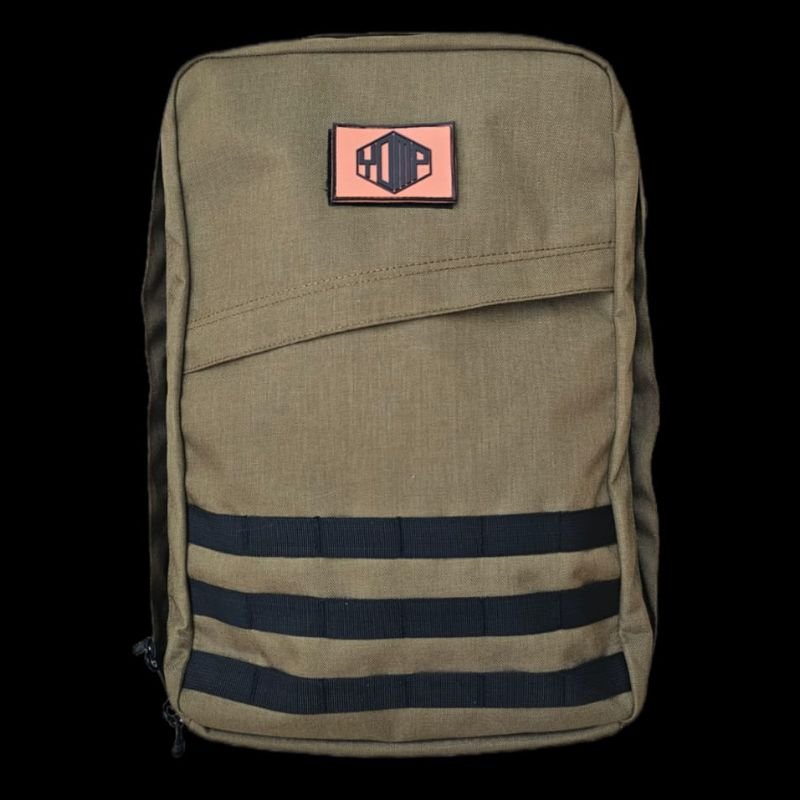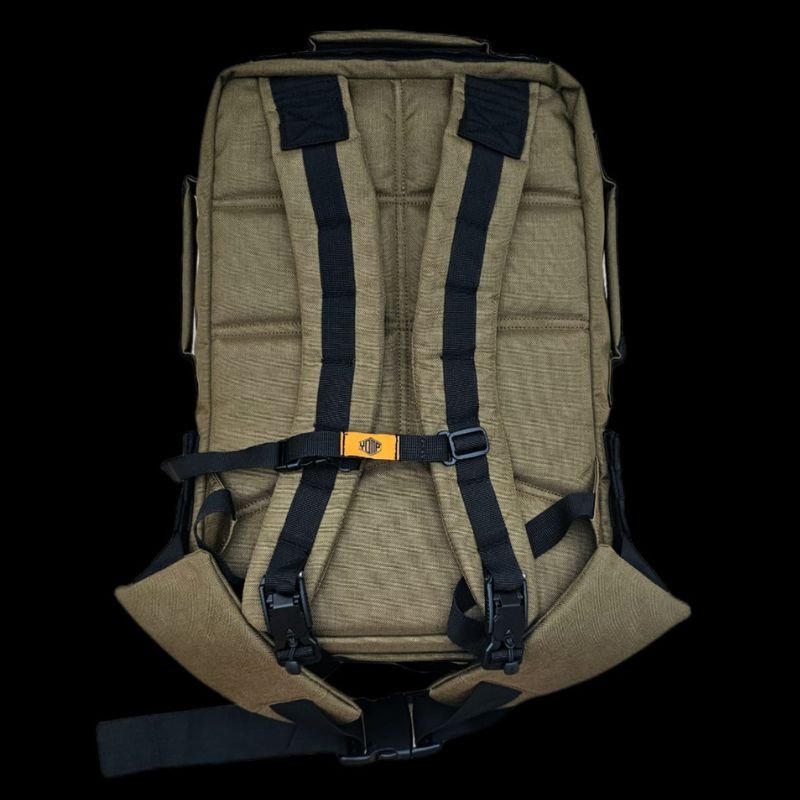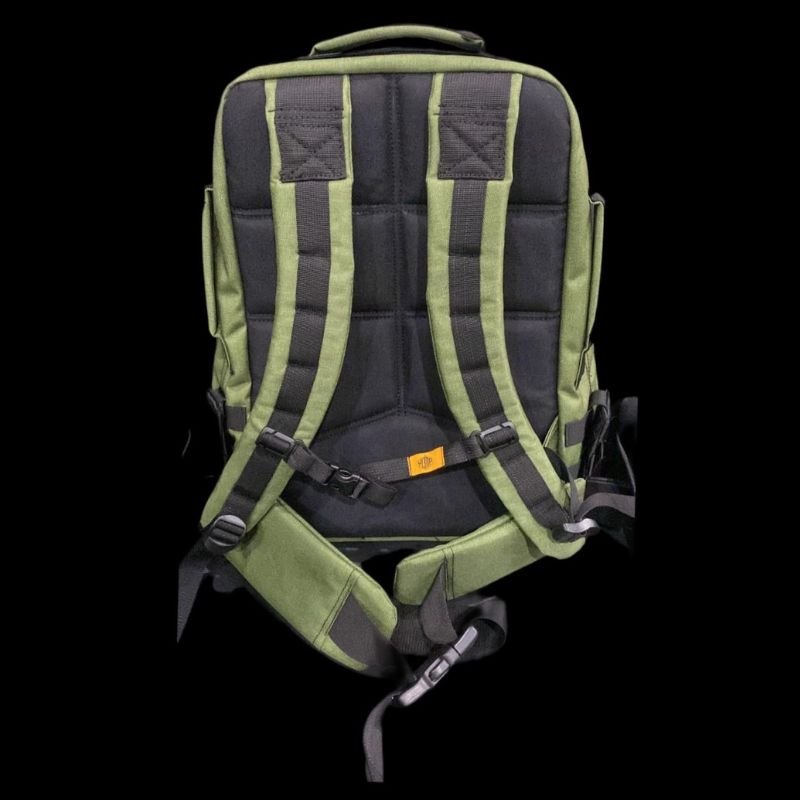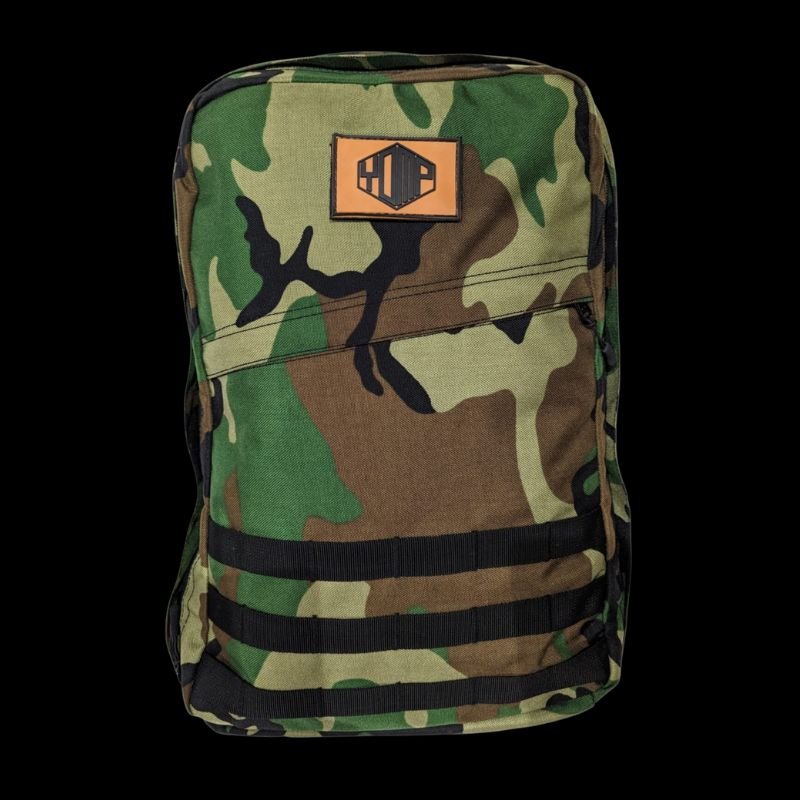The Benefits of a hip belt in a Yomping backpack

Using a hip belt in a Yomping backpack offers a myriad of benefits that can significantly enhance the overall yomping and rucking experience.
Firstly, a well-designed hip belt plays a crucial role in weight distribution. Rucking involves carrying a substantial load, often for extended periods, and the hip belt helps transfer a significant portion of that weight from your shoulders to your hips. This not only alleviates strain on the upper body but also promotes a more balanced and stable load carriage, allowing you to maintain better posture throughout your rucking journey.

How does a hip belt contribute to weight distribution during rucking?
The role of a hip belt in weight distribution during rucking is fundamental to optimising comfort and preventing strain on the upper body. When you embark on a rucking or yomping adventure, you're often carrying a substantial load, which can take a toll on your shoulders and back without proper weight distribution.
A hip belt is strategically positioned around the hips, the body's center of gravity. By fastening the hip belt snugly, the majority of the backpack's weight is transferred from the shoulders to the hips. This shift in weight distribution is highly effective because the hip region is supported by the pelvic girdle, a robust structure capable of bearing heavier loads more efficiently than the shoulders alone.
This redistribution of weight minimises the strain on your upper body muscles, reducing fatigue and allowing you to sustain your rucking pace for longer periods. As the hips can handle a more substantial load, the muscles in this region become actively engaged, promoting a bio mechanically efficient movement pattern.
In essence, a well-fitted hip belt transforms your hips and legs into the primary load-bearing components, optimising energy expenditure and preventing discomfort associated with prolonged rucking. It ensures that the physical stress is distributed across the body's strongest areas, allowing you to focus on the journey rather than the strain of the load.
Yomping activities where a hip belt is particularly crucial
While a hip belt can enhance the rucking experience across various activities, its importance becomes especially pronounced in specific types of rucking endeavours. Understanding when and where a hip belt is crucial can help ruckers tailor their gear to the demands of different situations.
Long-Distance Yomp
For individuals embarking on extended rucking sessions, such as multi-day hikes or events covering substantial distances, a hip belt is indispensable. The extended duration of these activities amplifies the significance of weight distribution and energy efficiency. A hip belt ensures that the load is effectively carried by the lower body, mitigating fatigue and promoting endurance.
Rucking on Challenging Terrain
When tackling uneven or challenging terrain, like steep hills, rocky paths, or off-road trails, the need for a hip belt becomes paramount. The stabilizing effect of the hip belt prevents the backpack from shifting or swaying, maintaining balance and control even in demanding environments. This is particularly crucial to avoid slips, trips, and falls during rucking.
Yomping with Variable Loads
In scenarios where the rucking load may vary, such as carrying extra gear for specific activities within the ruck (like camping equipment or workout gear), a hip belt proves invaluable. It adapts to the changing load, ensuring consistent weight distribution regardless of the contents of the backpack.
In essence, a hip belt is particularly crucial in long-distance rucking, challenging terrains, and situations where the load may vary. Understanding the specific demands of the rucking activity can guide individuals in choosing the right gear and optimising their overall experience.

Tips for adjusting and using a hip belt correctly to maximise its effectiveness
Optimising the use of a hip belt is key to reaping its full benefits during rucking. Here are essential tips for adjusting and using a hip belt correctly:
Proper Sizing
Ensure your rucking backpack has an adjustable hip belt and choose a size that fits snugly around your hips. The belt should sit on your hip bones, not on your waist, and be tight enough to prevent excessive movement but not so tight that it causes discomfort or restricts breathing
Centre the Buckle
When fastening the hip belt, centre the buckle in front of you. This ensures an even distribution of tension on both sides, maintaining balance and stability.
Adjust the Straps:
Most rucking backpacks with hip belts have straps that allow for fine-tuning. Adjust the straps to achieve a comfortable and secure fit. Tighten them gradually, starting from the centre, until you feel the load transferring to your hips without causing pressure points.
Maintain Level Placement:
Check that the hip belt is level across your hips. An unevenly placed belt can lead to discomfort and an imbalanced load distribution. Make adjustments as needed to keep the belt parallel to the ground
Load Distribution
Before setting out, ensure your rucking backpack is packed evenly. A well-distributed load contributes to the hip belt's effectiveness. Place heavier items closer to your back and distribute weight evenly from side to side.
Regular Readjustment
During your rucking journey, periodically check and readjust the hip belt as needed. Changes in terrain, fatigue, or adjustments to your backpack's contents may require fine-tuning to maintain optimal comfort and stability.
Practice with Weight
Before embarking on a longer rucking adventure, practice using the hip belt with weight in a controlled environment. This allows you to familiarize yourself with adjustments and ensures a comfortable fit when you're out on the trail.
By following these tips, ruckers can maximise the effectiveness of their hip belts, ensuring a comfortable, stable, and enjoyable experience during their rucking or yomping adventures.

How does a well-designed hip belt contribute to injury prevention during rucking and yomping?
A well-designed hip belt is a crucial element in injury prevention during rucking and yomping, offering support and stability that goes beyond mere comfort. Here's how a thoughtfully crafted hip belt plays a pivotal role in safeguarding against potential injuries:
Spinal Alignment
The primary purpose of a hip belt is to shift the load from the shoulders to the hips, promoting proper spinal alignment. This alignment reduces the risk of back injuries and minimizes strain on the spine, especially during prolonged rucking sessions where maintaining good posture is essential.
Reduced Upper Body Strain
Rucking without a hip belt places a significant burden on the muscles of the shoulders and upper back. Over time, this can lead to fatigue, discomfort, and even overuse injuries. A well-designed hip belt distributes the load efficiently, preventing excessive strain on the upper body and reducing the likelihood of injuries such as shoulder impingement or muscle strains.
Enhanced Stability on Uneven Terrain
When navigating challenging terrains during rucking or yomping, uneven surfaces can increase the risk of slips, trips, and falls. A secure hip belt minimizes the movement of the backpack, enhancing overall stability. This stability is crucial in preventing injuries related to falls, such as sprained ankles or twisted knees.
Improved Bio mechanics
A hip belt encourages the use of larger muscle groups in the hips and legs, optimising bio mechanics during movement. This not only improves energy efficiency but also reduces the strain on smaller, more susceptible muscles and joints. Enhanced bio mechanics contribute to injury prevention by promoting a more natural and sustainable gait.
Prevention of Load-Related Injuries
Carrying a heavy load without proper weight distribution can lead to injuries such as muscle strains, joint pain, and even stress fractures. A well-designed hip belt ensures that the load is evenly distributed, preventing localised stress on specific body parts and minimising the risk of load-related injuries.
A well-designed hip belt is a multifaceted tool for injury prevention during rucking and yomping. By promoting spinal alignment, reducing upper body strain, enhancing stability on uneven terrain, improving bio mechanics, and preventing load-related injuries, a hip belt becomes an indispensable asset for a safer and more enjoyable rucking experience.

